Lessons from the Liverpool fire
- Published
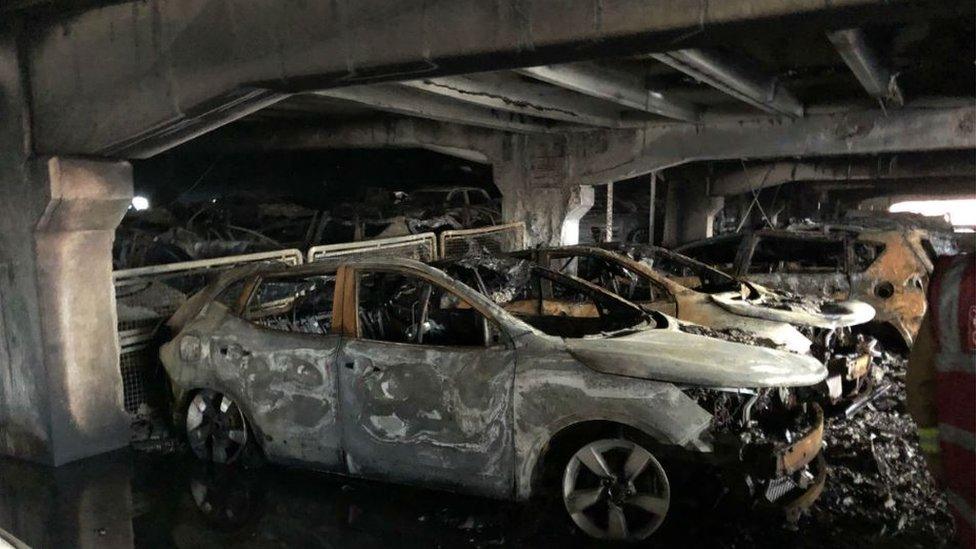
Mayor of Liverpool Joe Anderson said dismantling the building would be difficult with so many vehicles still inside
The fire at the Liverpool Echo Arena car park raises one extremely important issue about fire safety: why was the fire able to do so much damage?
The blaze, thankfully, claimed no lives. But it was a huge, unusual conflagration. An official report on car park fire safety, external written in 2010 concluded, based on reviewing old car park fires: "In general, little major structural damage occurs. In no cases reviewed did fire spread beyond the floor of origin."
Yet the Liverpool fire spread from one floor to another and it consumed 1,300 vehicles. It is worth considering why it happened and why things like this have not happened before. Broadly speaking, there are three possible directions to consider.
First, it could be happenstance. Maybe our car park fire suppression methods work 999,999 times out of 1,000,000 - and this was just that one time. Maybe it took an incredibly improbable set of circumstances to take hold, and maybe there will not be another blaze like this for a century?
Second, there could be some local problem related to the Liverpool Echo Arena car park. Maybe it was simply an unusual, unsafe design or there were maintenance failures. Maybe we will discover something strange about the types of vehicles parked up there.
Third, there could be some structural problem which meant that this could happen again, and it is a problem that exists in other car parks.
The latter problem is the one that preys on my mind. Indeed, it could be the case that car park designs that used to be safe are no longer appropriate because of technological change. One of the things worth considering is that cars are more combustible than they used to be.
A rising fuel load
Tests performed in 1997, external, for example, found cars produced during the nineties possessed greater so-called "calorific potential" - more energy that could be released to fuel a fire - than cars produced during the eighties. We have been making ever more car parts from combustible polymers. (The 2010 research report on car parks was actually commissioned because of concerns about new technologies making more flammable cars.)
It could now be that the heat output of car fires is rising, and so fire defences that once worked are no longer good enough. This is an idea worth thinking about, because it is also true elsewhere. The so-called "fire loading" - the potential severity of a hypothetical fire - has increased everywhere in our lives, not just in cars, but in our homes, too.
As time rolls on, we pack ever more combustible polymers into our living spaces. Take, for example, the results of an experiment by UL, external, a US engineering company, comparing "modern" American home designs to "legacy" designs, using furniture and materials from different design periods.
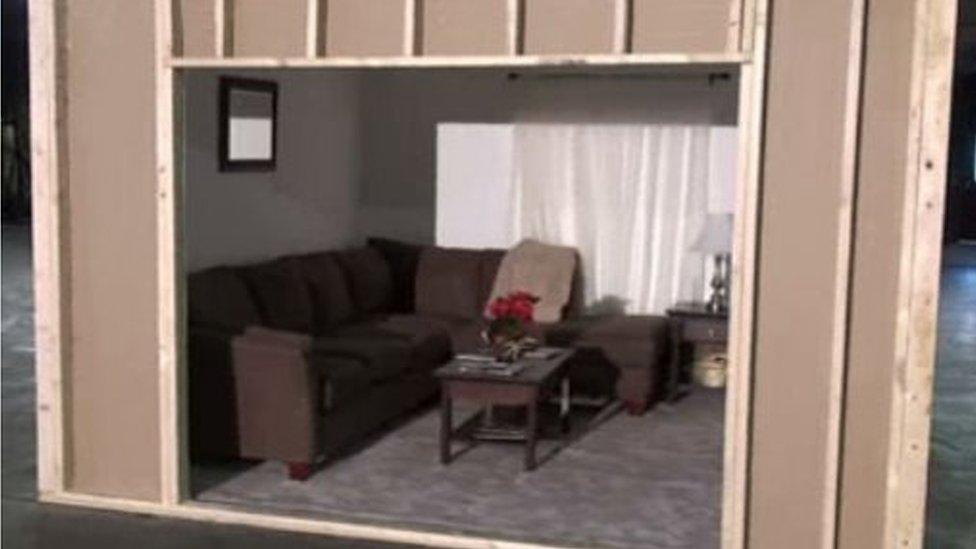
UL's "modern" furniture rig, prior to fire
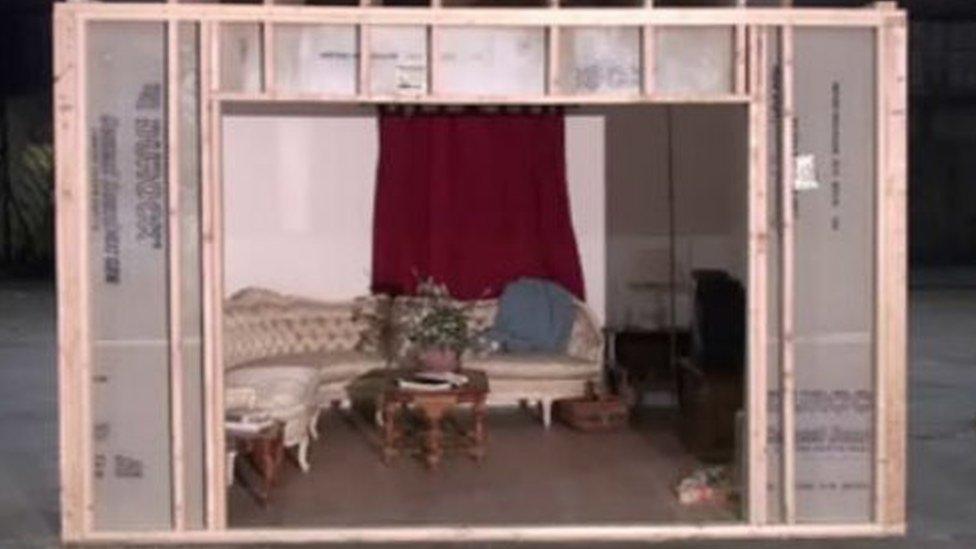
UL's "legacy" furniture rig, prior to fire
UL set a fire in these model rooms and then measured, among other things, the time to "flashover" - the moment when a fire escalates to cover lots of the combustible surfaces in a room. You can spot that moment on these temperature graphs below: it is when the line goes vertical.
The blue lines represent the temperature in seconds after ignition during the test of a modern room. The black and olive lines are the same figures for an old-fashioned room. You can see in the test cases here, the blue lines go vertical a lot of quicker.
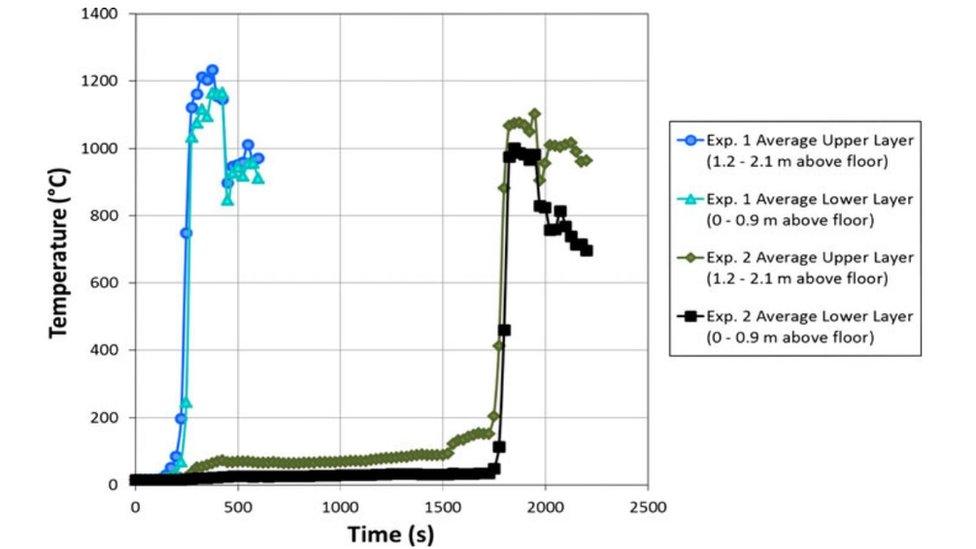
The researchers conclude: "All of the modern rooms transitioned to flashover in less than 5 minutes while the fastest legacy room to achieve flashover did so at in over 29 minutes. (…) Legacy furnished rooms took at least 700% longer to reach flashover".
That's a major problem for fire services. Their report notes that fire service response times are now much less likely to be in time to prevent flashover.
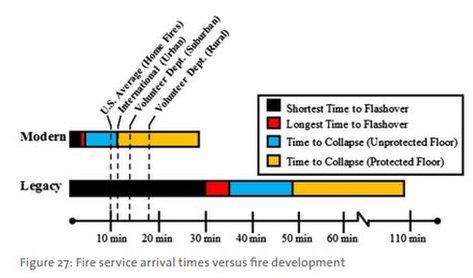
Fire rescue arrival times versus fire development speed
The increasing fuel load in modern homes - alongside design choices - make it more likely that ignition will happen, give you less time to detect fire, cut evacuation time, create more smoke, create more heat, make fire spread more likely and do more damage to building structures.
Do we need to change our fire safety rules?
To be clear, we have cut fire incidence in recent years. The total number of fires per million people in Great Britain has dropped from 10,510 in 1995 to 3,134 in 2016-17. You can see a similar success rate when you look at the overall human cost of fire: the number of deaths from fire in 1981-2 was 755. In 2016-17, there were 261.
This reflects a lot of effective public policy. For example, we have reduced smoking and encouraged the roll-out of smoke alarms. (The furniture industry claims a small portion of that is down to furniture regulation, although - as we reported last year - their maths looks extremely doubtful.) If a fire breaks out, we are now better at making sure it is caught fast and addressed early.
We have been so successful, in fact, that a theme that has recurred - time and again - in our investigation of Grenfell is that the government was indifferent to fire safety because it seemed to be a diminishing, self-solving problem.
But if our fuel load is higher than it once was, some fire-proofing designs that served us well in the 1980s, say, may no longer suffice. This is a case for reprising a theme we took up before Christmas: we know too little about modern fire safety.
We need to find out what happened in Liverpool, to understand whether we need to change our car parks. We may be heading into a world where we have been cutting fire ignition but have increased the potential size of outbreaks.